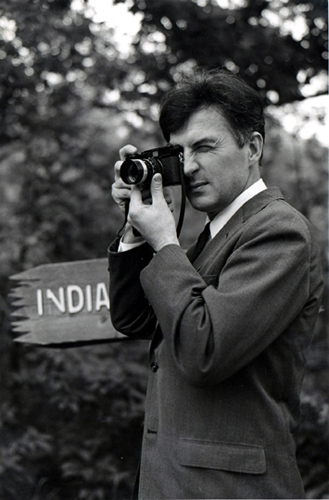On Haas
He disappeared swiftly like a comet leaving behind a long trail of human understanding and with such finesse.
I can hear him bursting out laughing and making fun of me if he read this.
–Henri Cartier-Bresson, Photographer
–Edward Steichen
The Museum of Modern Art, New York
–John Szarkowski
The Museum of Modern Art, New York
–Cornell Capa
International Center for Photography, New York
Dear Ernst Haas:
I wish I could tell you how much I appreciated your color photographs which you projected at the Asilomar Conference. I have seen thousands of color pictures, most I dislike for various reasons—sheer dullness to sheer decadence! The particular quality of your work was refreshment. I hope you know what I mean. The pseudo-abstract stuff which clutters so much of the contemporary art world contributes little to the spirit. Your work—although your sources were both simple natural situations and simple "junk"—possesses a direct quality of beauty which thoroughly transcends "subject." My congratulations! ( . . . )
I am very happy you exist. Photography is a better art because you exist. Can I say more? No! Please come out here and stay awhile with us. Again, thanks.
–Ansel Adams, Photographer
–Elliot Erwitt, Photographer
Ernst Haas taught me a great deal. His use of color is extraordinary, and he once took the camera of a child—a simple Kodak model—and created a typical, brilliant photograph. It is, he said, in the eye—the creative eye—and the means by which you capture it is quite beside the point. So whatever you write—and for whomever you write it—endow it with the most truth and artistry you can.
Haas is really remarkable. If you look at his work, you start to see elements of Richard Estes and George Tooker, two other artists you should be studying.
— Tennessee Williams
Interviewed by James Grissom, New Orleans, 1982

